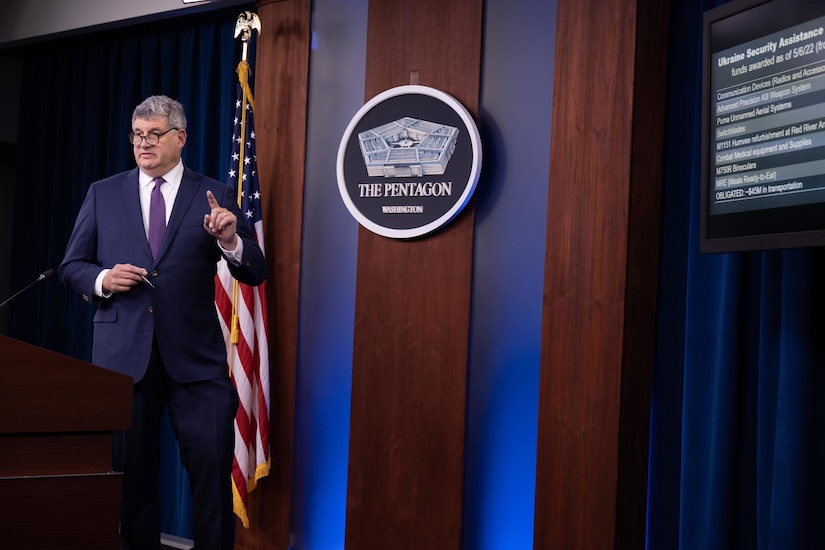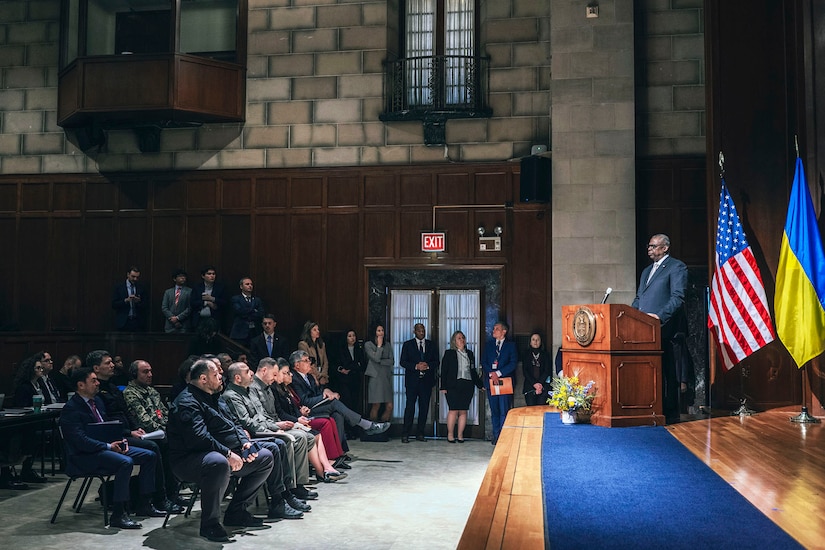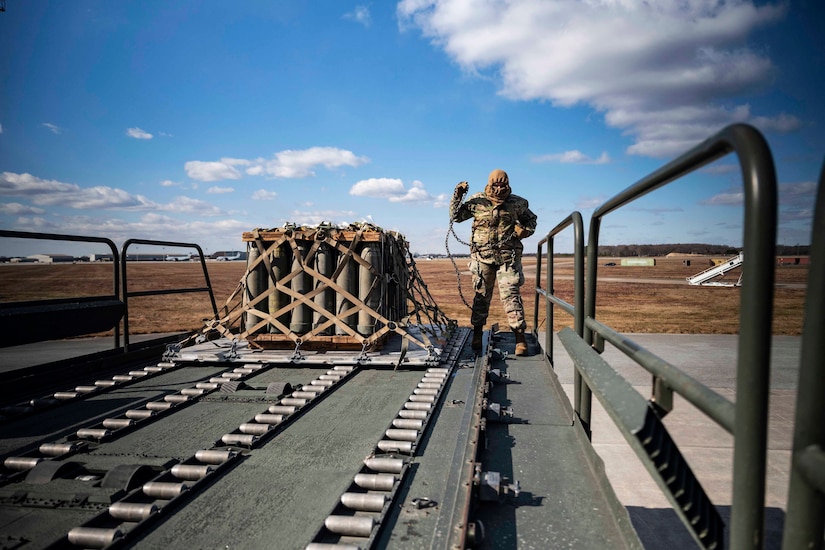https://www.defense.gov/News/News-Stories/Article/Article/3611715/top-dod-acquisition-official-forged-partnerships-provide-momentum-for-bolsterin/
Top DOD Acquisition Official: Forged Partnerships Provide Momentum for Bolstering Ukraine Industrial Base
Dec. 8, 2023 | By Joseph Clark, DOD News |
The partnerships forged among allies and partners have paved the path toward bolstering Ukraine’s defense industrial base for the long term, the Pentagon’s top acquisition official said this week.
William A. LaPlante, undersecretary of defense for acquisition and sustainment, met with industry and government officials from the U.S., Ukraine and other allies during the two-day Ukraine Defense Industrial Base Conference co-hosted by the White House, and the departments of Commerce and Defense in Washington.
As he kicked off a series of panel discussions, LaPlante said U.S. and Ukrainian allies and partners could draw from previous success in rallying together as they look to shore up Ukraine’s ability to produce critical military equipment domestically.
Key among those accomplishments has been the establishment of the Ukraine Defense Contact Group, which LaPlante noted has rallied a coalition of close to 50 allies since Russia’s unprovoked invasion of Ukraine. The coalition has helped guide nearly $80 billion in combined security assistance.
LaPlante also noted the formation of National Armaments Directors under the auspices of the contact group, which aims to synchronize international efforts to overcome industrial base and sustainment challenges in support of Ukraine.
“To date, the group’s efforts have helped increase production of critical munitions and interceptors around the globe, establish repair facilities, translate technical manuals, deliver spare parts, and most importantly, get contracts awarded to our partners in industry,” LaPlante said.
He said those efforts have increasingly focused on Ukraine’s long-term success, including efforts to increase its domestic production of munitions and development of a sustainment strategy.
That strategy will cover a range of issues including maintenance, repair and overhaul of equipment; expansion of, and training for, logistics information technology systems; and availability of technical data packages for spare parts.
“As we look toward the future, the lessons learned from the NAD [National Armaments Directors] forum can serve [as] a blueprint for what comes next after the discussions here this week,” he said.
Among those lessons is the need to unite around concrete, practical objectives for Ukraine’s domestic industrial base, LaPlante said.
“That means establishing specific targets for production numbers. It means awarding contracts. And it means thinking creatively and collaboratively to enable successful execution,” he said.
“Whether working through intellectual property access, export control regulations, or mechanisms for greater co-development, co-production and co-sustainment, we have to dive into the hard conversations and find a way forward together,” he added.
This week’s conference provided a critical forum for stakeholders to begin plotting a path forward to reach those objectives.
On Wednesday, U.S. and Ukrainian officials signed a statement of intent on exploring the co-production of critical weapons and on prioritizing technical and data exchange to address the urgent needs of Ukraine’s armed forces.
Other discussions at the conference included areas of potential collaboration among the U.S. and Ukrainian governments and industry partners on ways to advance best practices that can lead to long-term success, as well as increased investments in Ukraine’s defense sector.
Speaking during the opening session, Secretary of Defense Lloyd J. Austin underscored the importance of bolstering Ukraine’s ability to produce critical military equipment domestically in order to maintain lasting freedom and sovereignty within its borders.
“Together with our allies and partners, we must continue working to help Ukraine repel Russian forces today and build a future force for Ukraine that can deter Russian aggression in the years to come,” he said. “That will mean strengthening Ukraine’s defense industrial base, both to maintain Ukraine’s current war effort and to bolster Ukraine’s national strength and deterrence long into the future.”
LaPlante said the conference is an important step in working toward an “end-state of [the] Ukrainian industrial base that can meet immediate operational needs, foster the strengthening and expansion of Ukraine’s future force, and contribute significantly to the growth of Ukraine’s economy.”
In the coming weeks, LaPlante said he looks forward to further discussions and to partnering with government agencies and industry to accomplish those goals.
Among the interagency pathways is a newly announced Ukraine Deal Team comprising representatives from the Defense, Commerce and State departments focused on helping U.S. companies access Ukrainian markets.
“This deal team will deploy all available U.S. government tools, including resources and expertise, to help U.S. companies compete and succeed in the Ukrainian defense industry,” said Penny Pritzker, the U.S. special representative for Ukraine’s economic recovery.
LaPlante said it was critical that the allies and partners continue the progress in helping Ukraine.
“Just as the National Armaments Directors have demonstrated a unique ability to drive meaningful action through the UDCG, the group gathered here today must do the same through collaboration and cooperation,” he said.
“Our support to the brave people of Ukraine remains unwavering, and I hope we are all ready to roll up our sleeves and maintain this momentum,” he said.




